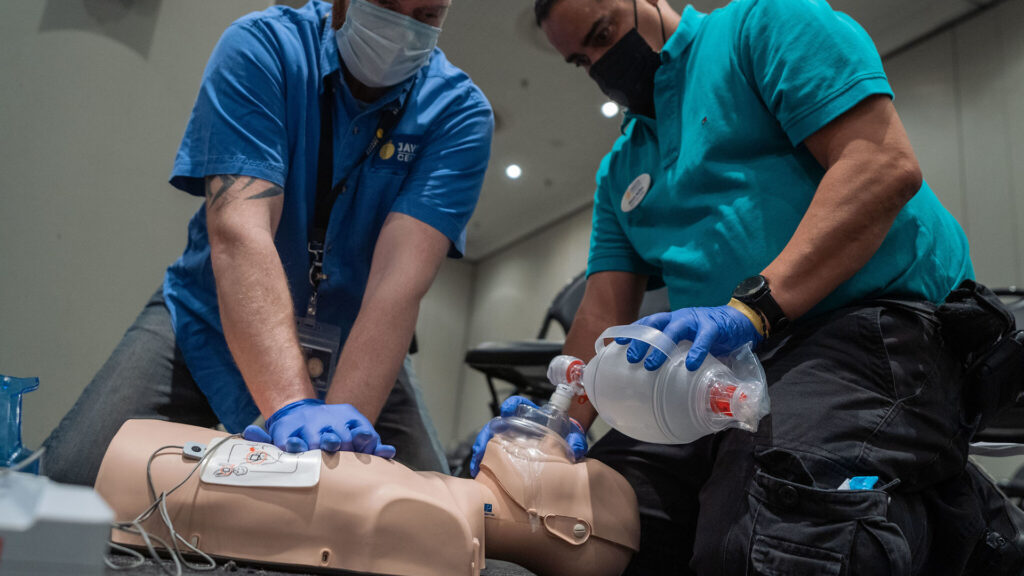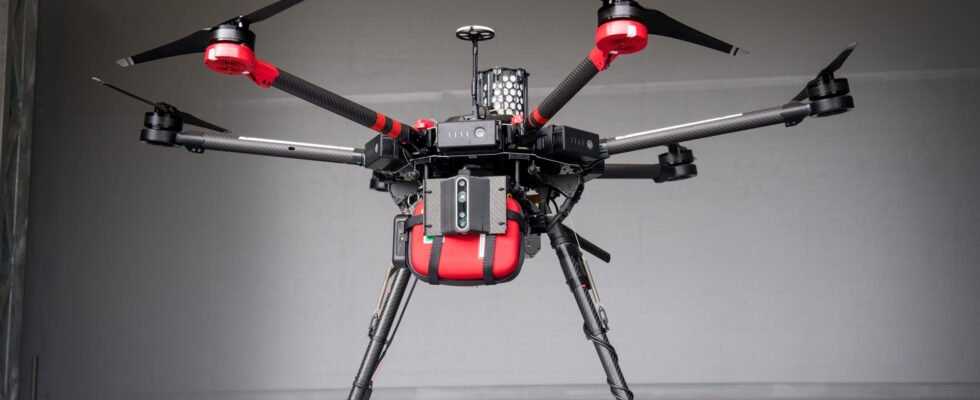Heart attack death averted in part with rescue drone
It is an intervention which is presented as a world first. In Sweden, a 71-year-old man was saved by the intervention of a drone carrying a defibrillator. The facts, as presented by the company Everdrone in a press release published on January 4, 2022, occurred in December in Trollhättan, in the southwest of the country.
The senior suffered a heart attack while shoveling snow in his driveway. The person concerned was incredibly lucky: he had his discomfort as a doctor was driving to the hospital when he saw the man collapse. He then immediately proceeded to a cardiac massage, while another passer-by called 112 to call for help.
It was following this call that an ambulance was dispatched to the scene, but also a drone carrying a defibrillator – this one arrived first at the home of the unfortunate man, three minutes after the call, and allowed the doctor to continue his first aid measures, until the paramedics take over and transport the victim to the hospital.
If the drone was only one link in a chain with a happy outcome, this first gives food for thought for supporters of emergency drones – and for companies that position themselves in this niche. The challenge here is to be able to start cardiac massage and defibrillation very early. The more time passes, the more the chances diminish.
The challenge of time to save heart attack victims
According to the city of Paris, there are three people every day who are victims of cardiac arrest in a public place. However, the average time before the arrival of help in Paris is 10 minutes. And with every lost minute, 10% of brain cells are destroyed! Being under the 5 minute mark is decisive to have a good chance of reviving the heart.
There are around 50,000 people in France who are victims of cardiac arrest each year, according to the company AED MAP, which operates a geolocation service for volunteer first-aiders in the event of cardiac arrest – good Samaritans. However, few people survive: barely 7.5%, that is to say less than one in ten people. Hence the desire to develop the approach of rescue drones.

The subject is not new: the track has been imagined for years (we find a trace for example from 2014). In the same genre, we have also seen the emergence of the concept of a rescue drone at sea, which could drop a buoy to a person in difficulty, more or less far from the coast, while awaiting the arrival of a jet-ski or of a zodiac to fish it out.
It was also a political question, when a deputy asked, unsuccessfully, a question to the Ministry of Health and Solidarity. The parliamentarian wanted to know the government’s opinion on these defibrillator drones in a victim relief scheme, since they are able to step over traffic to save precious time.
Obstacles remain to be removed, however, starting with the authorization to fly a drone in town – but an exception to the status quo would be entirely justified, given the goals pursued by the emergency drone.
Public knowledge of first aid procedures is another: if automated external defibrillators are relatively easy to use, it would be preferable to know how to perform cardiac massage, to give the victim a chance. while waiting for a drone, an ambulance or a third party with an AED.

